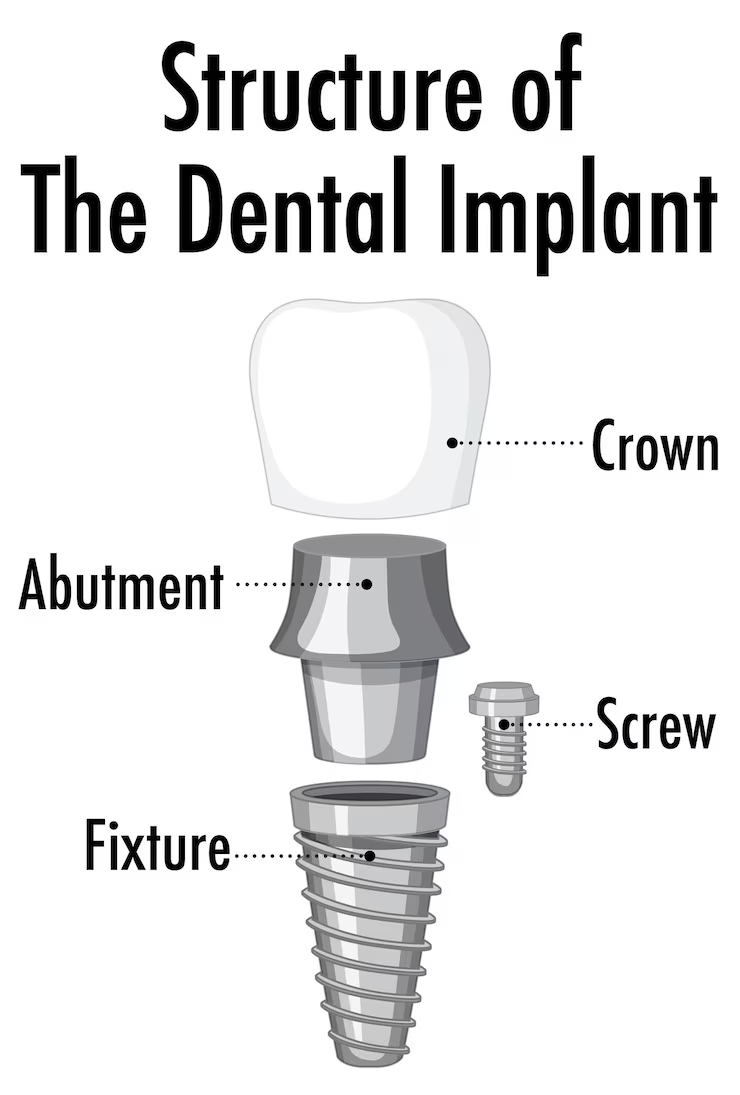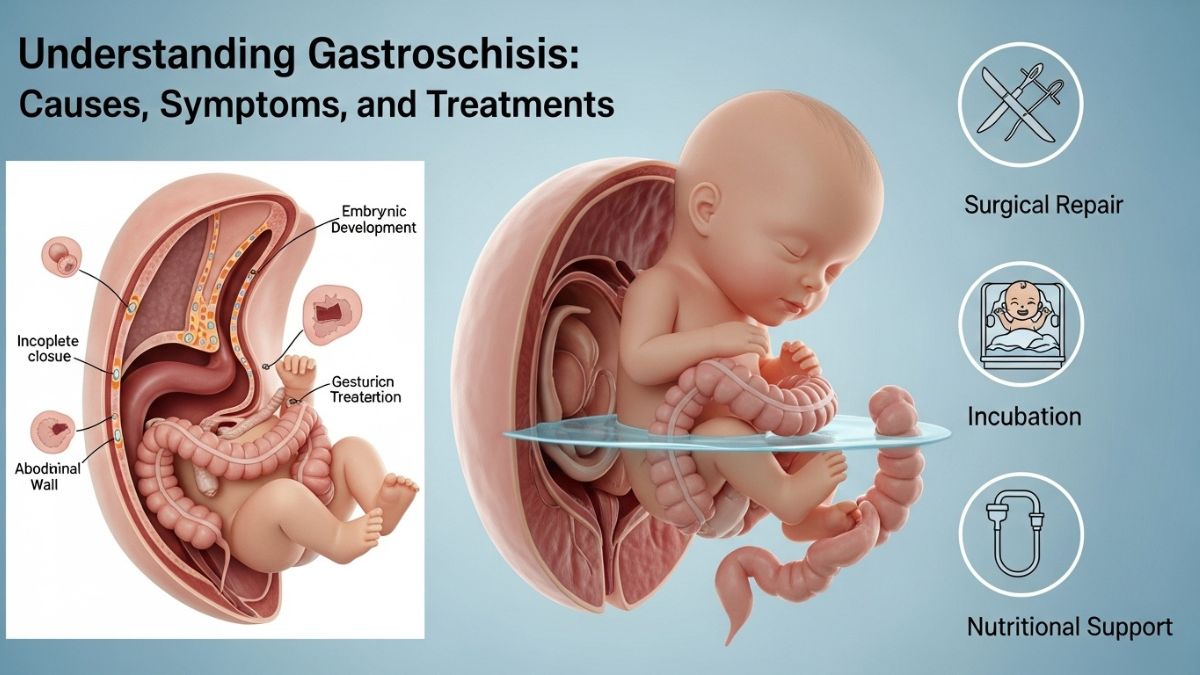Dental implants are one of the most effective solutions for replacing missing teeth, offering both functionality and a natural look. But while they’re designed to last a lifetime, many people wonder if implants can cause problems years after the initial procedure. Let’s delve into how dental implants work, what potential long-term issues you should be aware of, and how to ensure your implants remain healthy for decades.
Dental implants are artificial tooth roots made of biocompatible materials like titanium, designed to support a crown, bridge, or denture. They are surgically placed into the jawbone, where they integrate with the bone to provide a strong foundation for replacement teeth.
Components of a Dental Implant
A dental implant has three main parts:
- Titanium Post (Implant Fixture):
The titanium post is the foundation of the dental implant and is surgically placed into the jawbone. This post acts as a substitute for the root of the missing tooth. Titanium is used because it is biocompatible, meaning it can integrate with the bone in a process called osseointegration. Over time, the bone grows around the titanium post, anchoring it firmly in place. This integration provides the strength and stability needed to support chewing forces, much like a natural tooth root.
- Abutment:
The abutment is a small connector piece that attaches the titanium post to the prosthetic crown. Typically made from titanium, stainless steel, or zirconia, the abutment ensures a secure link between the implant and the visible restoration. It is carefully positioned just above the gumline and is designed to provide a stable base for the prosthetic while blending discreetly with the surrounding teeth. The abutment also allows dentists to easily attach or replace the crown if needed in the future.
- Crown or Prosthetic Tooth:
The crown is the visible part of the dental implant that replicates the appearance and function of a natural tooth. It is custom-made to match the color, size, and shape of your existing teeth, ensuring a natural and seamless look. Crowns are typically crafted from porcelain, ceramic, or a composite material for a lifelike appearance. In some cases, patients may receive bridges or dentures instead of a single crown if they are replacing multiple teeth. The crown not only restores aesthetics but also allows for normal eating and speaking functions.
How Dental Implants Work
The implant integrates with your jawbone in a process called osseointegration. This creates a sturdy anchor, allowing you to chew, speak, and smile with confidence.
Cost Considerations of Dental Implants
General Cost of Dental Implants Worldwide
Dental implants are often expensive, with costs ranging from $3,000 to $6,000 per implant in
countries like the US or UK.
Cost of Dental Implants in Mexico
You might wonder, “how much is dental work in mexico?” Mexico has emerged as a leading destination for affordable, high-quality dental implants. Prices range from $500 to $1,000 per implant, including consultations and follow-up care. Many clinics in Mexico also offer comprehensive dental tourism packages, combining treatment with a vacation experience. The lower costs do not compromise the quality, as clinics are equipped with state-of-the-art technology and internationally trained dentists.
Potential Short-Term Issues with Dental Implants
Common Immediate Problems Post-Surgery
It’s common to experience some discomfort, swelling, or minor bleeding shortly after the procedure. In rare cases, there may be infections or minor nerve irritation.
How These Issues Are Typically Resolved
Most short-term issues resolve with proper post-operative care, including antibiotics for infections and regular follow-ups with your dentist.
Can Dental Implants Cause Problems Years Later?
Overview of Long-Term Implant Health
Dental implants have a success rate of 90–95%, but they’re not immune to complications over time. Understanding the signs of potential issues is key to addressing them early.
Signs Your Implant Might Be Failing
- Persistent Pain Around the Implant Site: Discomfort that doesn’t subside could indicate an infection, nerve damage, or other complications.
- Loosening of the Implant or Attached Crown: If the implant feels unstable or the crown shifts, it might suggest a problem with the underlying bone integration or mechanical issues.
- Gum Recession or Inflammation Around the Implant: Receding gums can expose the implant, leading to increased sensitivity and a higher risk of infection.
- Swelling or Redness Around the Implant Area: Persistent swelling or redness can indicate an infection, such as peri-implantitis, which needs immediate attention.
- Bleeding Gums: Bleeding while brushing, flossing, or eating could be an early sign of gum disease affecting the implant site.
- Pus or Discharge: Any pus or discharge from the area around the implant is a clear sign of infection and should be addressed promptly.
- Difficulty Chewing or Biting: If you experience pain or difficulty while chewing, it may indicate that the implant is not properly aligned or stable.
- Bad Breath or Unpleasant Taste: Chronic bad breath or an unusual taste in your mouth could signal an infection or debris trapped around the implant.
- Visible Threads of the Implant: If the implant threads become visible, it may be due to bone loss or gum recession.
- Increased Sensitivity to Hot or Cold: This could indicate nerve involvement or exposure of the implant post due to gum recession.
- Changes in Alignment of Adjacent Teeth: Movement of nearby teeth could suggest that the implant is not maintaining proper structural support.
- Feeling of Pressure or Fullness Around the Implant: This could signal an issue with osseointegration or excess bone growth affecting the implant area.
The Role of Peri-Implantitis
Peri-implantitis is a condition characterized by inflammation and infection around the implant, leading to bone loss. It is a major cause of implant failure if left untreated.
Bone Loss Around the Implant
Bone loss can weaken the implant’s stability, potentially causing it to fail over time. This is often linked to poor oral hygiene or peri-implantitis.
Implant Fracture or Mechanical Failure
Though rare, the implant or abutment can crack under excessive pressure. This might happen due to teeth grinding or biting on hard objects.
Nerve or Tissue Damage
In some cases, implants placed too close to nerves or other tissues can cause pain or numbness.
Impact of General Health on Implant Longevity
Systemic health issues like diabetes, smoking, or osteoporosis can negatively affect the integration and stability of dental implants over the years.
Causes of Long-Term Problems with Dental Implants
Poor Oral Hygiene and Its Impact
Failing to maintain good oral hygiene can lead to plaque buildup, gum disease, and peri-implantitis, increasing the risk of implant failure.
Surgical Errors or Placement Issues
Improper placement or alignment during surgery can result in uneven bite forces, nerve damage, or a lack of proper osseointegration.
Quality of Materials Used in the Implant
Low-quality materials or poorly made crowns can contribute to early wear and tear, making long-term issues more likely.
Changes in Jawbone Structure Over Time
Bone density can decrease with age, leading to reduced support for the implant.
What to Do If You Experience Implant Problems
If you notice pain, loosening, or other issues with your implant, it’s important to consult your dentist promptly. Depending on the problem, solutions might include cleaning the implant site, bone grafting, or replacing the implant.
Dental implants are a long-term investment in your oral health and quality of life. While problems years after placement are rare, they can occur due to factors like poor maintenance, health conditions, or material quality. Understanding these risks and taking preventive measures ensures you can enjoy the benefits of your implant for decades. If cost is a concern, exploring options in Mexico might make this life-changing procedure more accessible.











